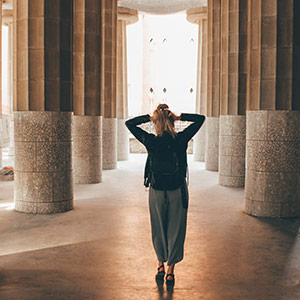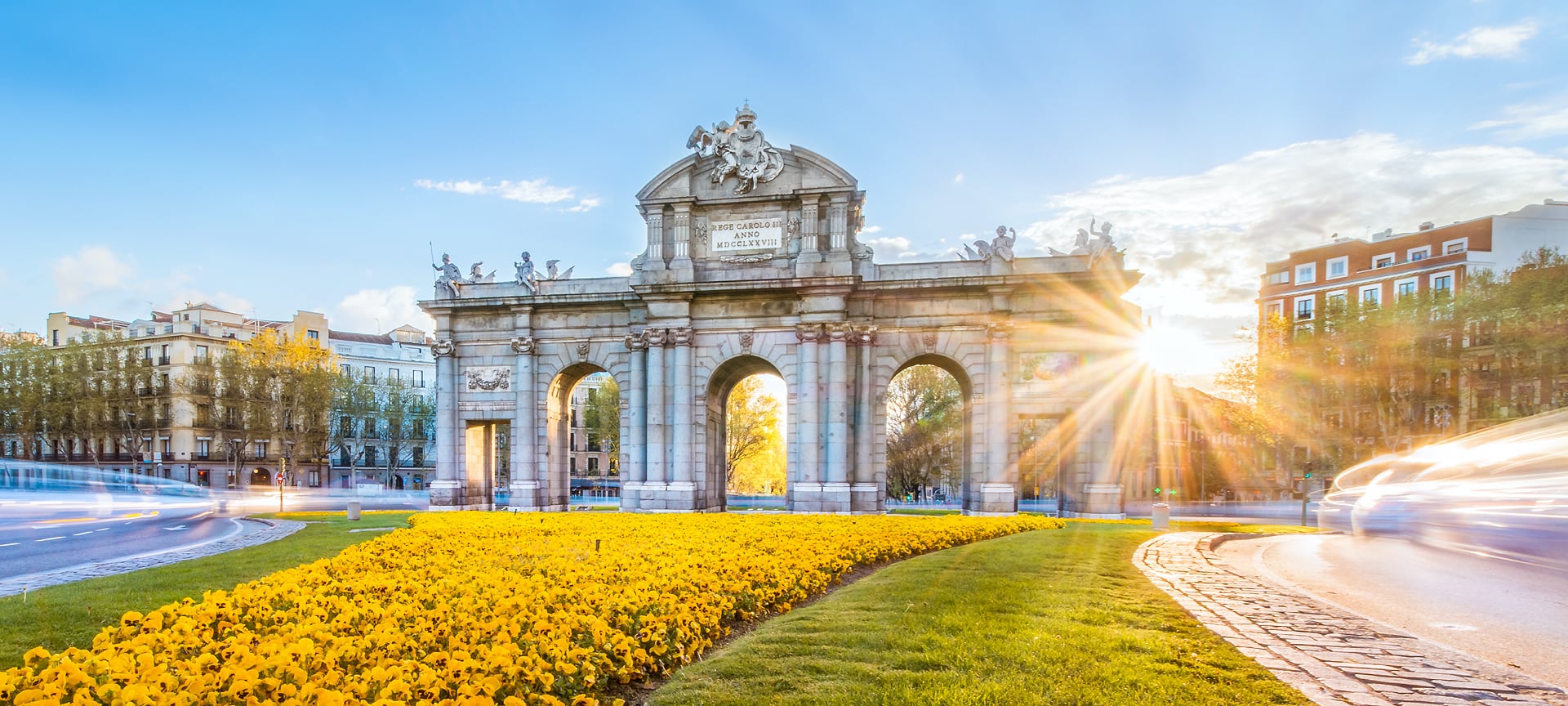
Madrid is a city of monuments. A stroll through its streets is rather like wandering along the corridors of an architectural art gallery - Madrid’s on show 24 hours a day! Among its many popular monuments, some have become true symbols of the Spanish capital. Do you know them?
Debe activar Javascript para poder utilizar este servicio
-
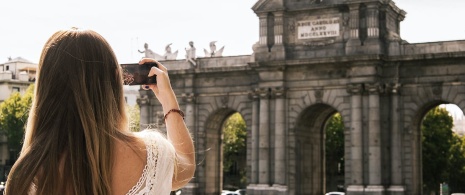
La Puerta de Alcalá
La Puerta de Alcalá is one of Madrid’s most emblematic monuments. Did you know it was Europe’s very first Arc de Triomphe? Even older than its famous Parisian neighbour!It was designed by Italian architect Francisco Sabatini in 1778, but the first version of the Puerta de Alcalá was built almost a century earlier. It was a tribute to Queen Margaret, wife of Philip III, to mark her arrival in Madrid. However, it was eventually demolished as King Charles III wanted a new one built on Plaza de la Independencia (its present location).At other points in its history, Madrid was home to several royal gates that allowed access to the city - such as the Guadalajara, Atocha and Toledo gates. The Puerta de Alcalá gate was built as the point of entry for visitors arriving from France, Catalonia and Aragon, and its outward-facing façade welcomed those arriving at the city. Have you ever noticed that each of its façades has a different design? It’s said that the decorations vary because Charles III couldn’t decide which of the designs proposed by Sabatini he liked best, so he ordered one to be created on each of the sides.
-
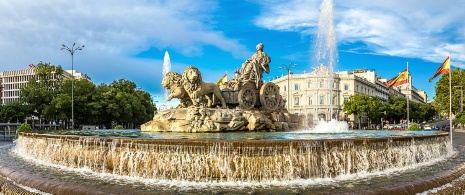
The Cibeles Fountain
The Cibeles fountain is a true Madrid classic, and the place where the Real Madrid football club celebrates its victories. It was built by Ventura Rodriguez, Francisco Gutierrez and Roberto Michel in 1782, when Carlos III wanted to decorate the Paseo del Prado with a number of fountains (such as the Apollo and Neptunefountains). In addition to its artistic qualities, this fountain once supplied water to the local population, and was used by the cavalry as a water stop for their horses. In 1860, the decision was taken to modify the water pipes in order to give them the form of a bear and a griffin (a mythological beast that is half eagle, half lion). In 1895, when the fountain was moved to the centre of the Plaza Cibeles, these figures were removed, but they can still be seen in the San Isidro Museum.Today, the fountain depicts a chariot drawn by two lions (Hippomenes and Atalanta). This scene is presided over by Cybele, the mother goddess who symbolises the earth and fertility, who holds the keys to the city in her left hand. Some years after the fountain was built, the figures of two cherubic semi-naked boys (also known in Spanish as ‘amorcillos’) were added; one of them pours water from a pitcher.
-
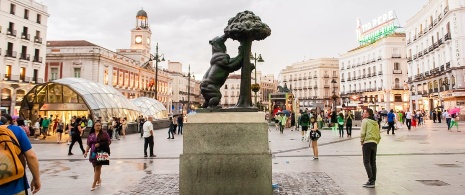
The statue of the Bear and the Strawberry Tree, Kilometre Zero and the Post-Office Clock
The Puerta del Sol is one of the capital’s most emblematic squares. It has borne witness to key moments in Spanish history such as Spanish political figure Niceto Alcalá-Zamora’s 1931 proclamation of the Second Spanish Republic to the crowds gathered at the Puerta del Sol.In this square, you’ll find important monuments such as the statue of the Bear and the Strawberry Tree, Kilometre Zero and the Post-Office Clock. This clock is renowned throughout Spain, as since 1962 its hands have marked a venerable tradition: the 12 chimes at midnight to welcome in the New Year. The clock was donated by a soldier called José Rodríguez de Losada, and is now installed in the tower of the square’s oldest building.If you want to take home a highly symbolic souvenir of your trip to Madrid, you might want to get a photo of yourself next to the Kilometre Zero plaque - so you can tell your friends that here you stood at the very centre of the country! This plaque dates back to 1950, and marks the starting point for all of the roads in Spain. The statue of the Bear and the Strawberry Tree is a true icon of the city, and has been the emblem on its coat of arms since way back in the thirteenth century. It was created by Alicante sculptor Antonio Navarro Santafé in 1967, when the city council decided to erect a statue that would represent the key symbols of Madrid: a bear leaning on a strawberry tree to reach some of its fruit.The city is also home to buildings of great national importance, such as the Crystal Palace, the Debod Temple and the Royal Palace. No photo can really do justice to the beauty of Madrid’s monuments, so why not come over and take a look for yourself?








